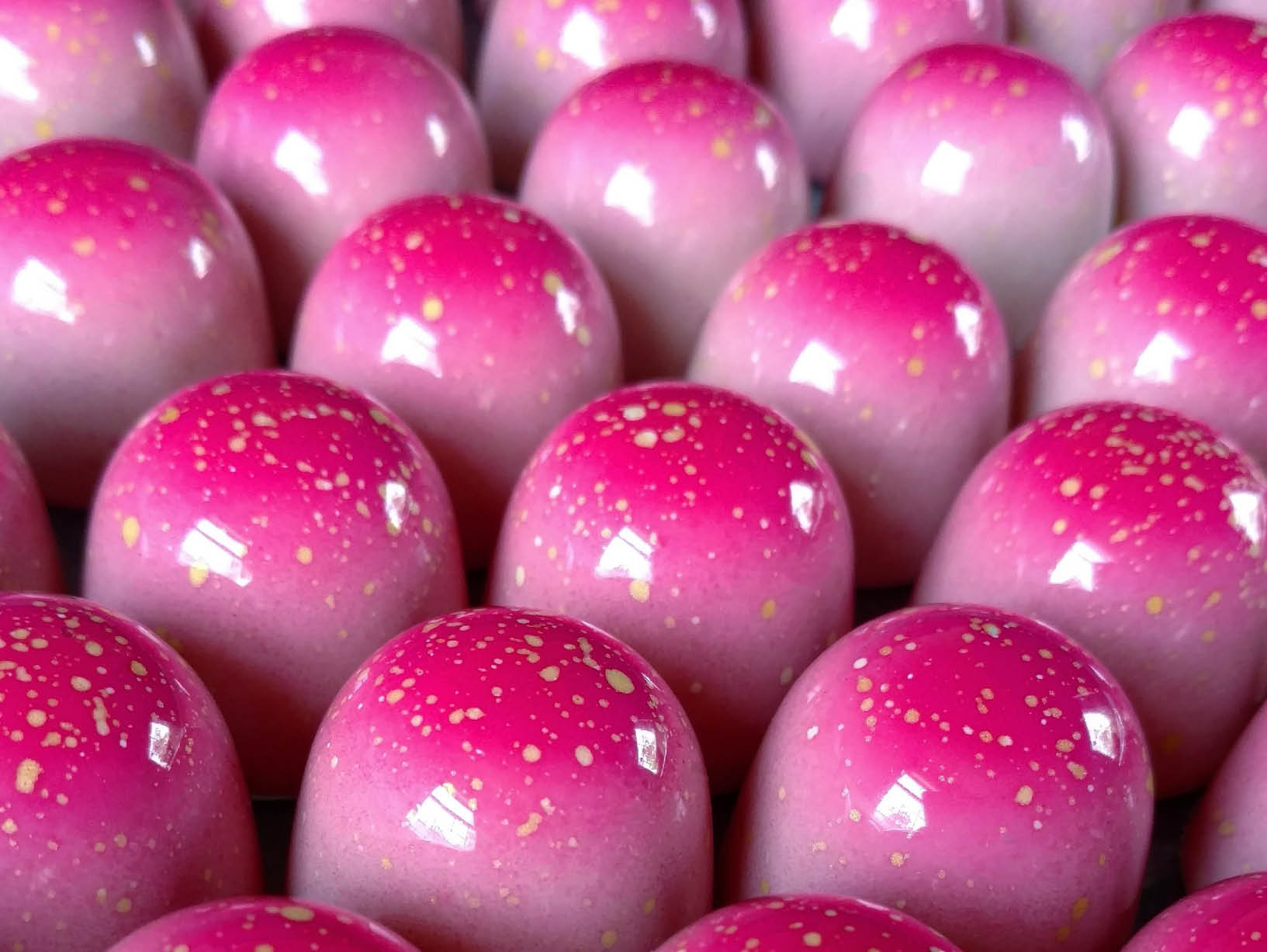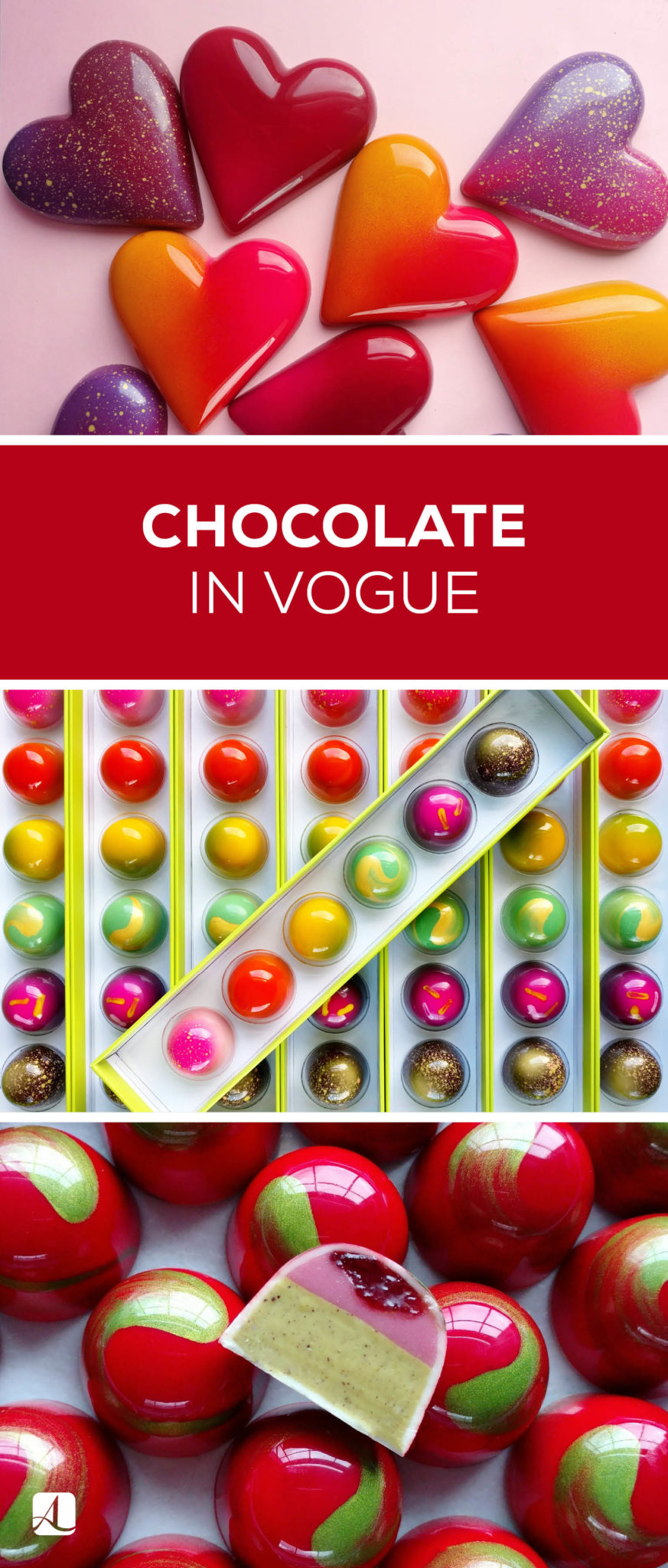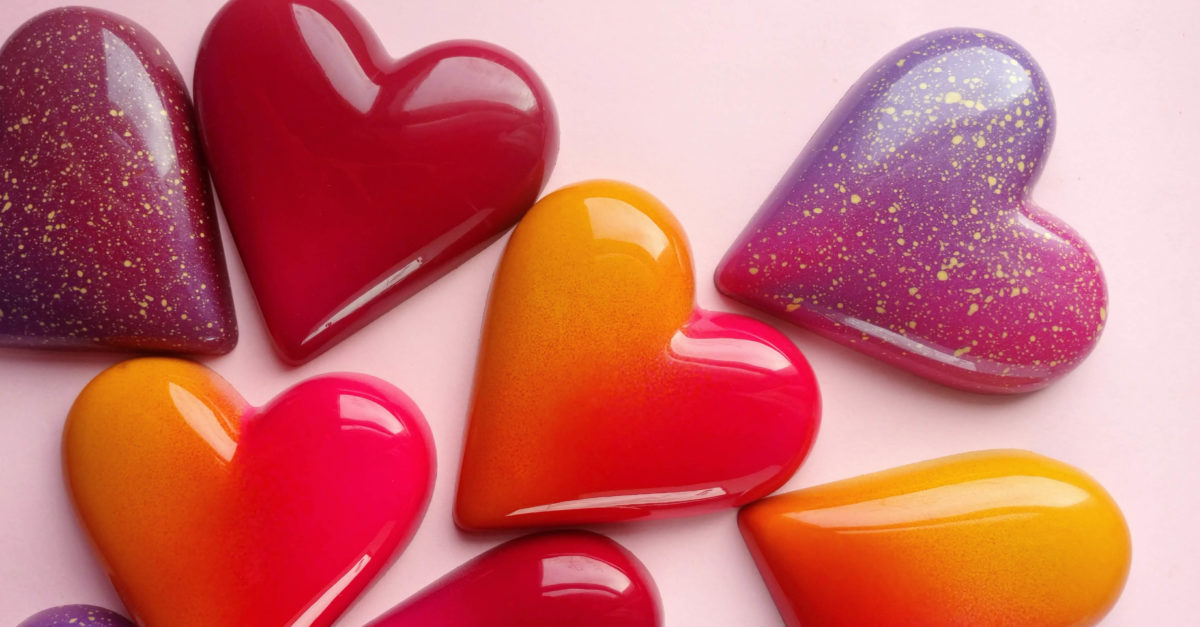Chocolate in Vogue
Photography by Elle Lei
Elle Lei’s bonbons are so visually stunning, it’s hard to know whether to classify them as chocolate or art. Her passion for culinary art and design (and specifically sweet confections) has made her Chicago-area business, SUGOi Sweets, a beautiful success.

What was your dream career growing up?
I liked the idea of being a fashion designer. And, while I never really knew about careers in design, looking back now, I think creating and designing things were directions I always wanted to go in. As I grew older and continued school, I was pointed toward more practical subjects. I eventually chose a non-art-related major and worked in non-art-related fields for many years.
How did you get started in the culinary arts?
I feel every journey in the culinary arts begins from a memory. For me, this was family gatherings as a child. I had an uncle who was a very skilled chef, and he worked at the best hotel in my city. He would create wonderful meals for the family to share during the holidays.
What other culinary jobs have you held?
The restaurant world is very hierarchical. Like many chefs coming up through the ranks, I held a variety of different jobs, including dishwasher, pantry chef, line cook, macaron baker, and confectioner. The turning point for me was getting hired as the garde-manger at the acclaimed restaurant Proof on Main in Louisville, Kentucky. Working there taught me a whole new world of flavor pairings. It not only tapped into my love of food but also awoke the designer in me. This job launched my culinary career, and when I moved to Chicago, I soon found myself making pastries for one of Rick Bayless’s restaurants.
What made you want to go to Japan?
I have always been a fan of Japanese culture, design, and food. While we can experience these things from afar, nothing is quite like going there and being immersed in it. So I jumped at the chance to go when my partner got a job opportunity in the beautiful and charming city of Kyoto. It is probably the most traditional city in a very traditional country, and, as a result, it has a lot of layers. You can have a great time there on vacation because it is beautiful and the Japanese are great hosts, but I feel it is best experienced through an extended stay, which allows you to peel away those layers.
What makes Kyoto inspiring? Is there a moment or memory that stands out to you?
Kyoto taught me that dessert can be exciting and offer endless possibilities. I was particularly struck by the appreciation Japan shows for the seasons. Shopping districts decorate for every season, and menus feature seasonal ingredients. For example, in fall and winter, every shop seems to have its own version of the Mont Blanc, famous Italian/French dessert made of sweetened chestnut puree piped into vermicelli and topped with whipped cream. Sampling different versions, like a green one made with matcha and a pink one made with sakura essence, was one of my favorite pastimes.

Did you feel prepared to start a business?
To be honest, I was totally clueless about starting a business. I had to attend local workshops, Google everything, learn the legal and tax aspects of the business, and lean on others for help. I taught myself the intricacies of chocolate and created recipes that are not only diverse and delicious but also have a long enough shelf-life to remain stable over a period of time. I enjoyed brainstorming and designing the logo and packaging the most. I spent days deciding on the typeface and main brand colors.
Will you talk about what sugoi means?
Sugoi (すごい) is a Japanese term used to express the sense of being awestruck or overwhelmed by the excitement of an experience or a moment. Every time people interact with my business, I want them to have a positive “SUGOi moment” that can pick them up after a
tough day or contribute to one of life’s many celebrations.
What do you find most rewarding about your business?
Most of my joy comes from the people and the products. My partner and I started building our customer base by attending Chicago-area maker markets. I still remember the names of our first customers, and, while we have been almost strictly online for the better part of a year, it brings a smile to my face when I see an order come through from one of those original customers. It is like they are saying, “I see you and I appreciate you.” I appreciate them too.

Where do you find inspiration for flavor profiles? What is the most unusual flavor you sell? And the most popular?
I find flavor inspiration everywhere but mostly from other foods, such as plated desserts, snacks, and ice cream. Sometimes it’s as simple as a color combo l want to include. For example, the Matcha bonbon is inspired by my Kyoto experience—the green represents matcha, the swirl design is reminiscent of the whisking in a traditional Japanese tea ceremony, and the gold is a nod to the famous Temple of the Golden Pavilion.
I would say our most unusual flavors on the year-round menu are Cotton Candy Pop Rock and Beer Pretzel. Cotton Candy Pop Rock is very popular with its fun color design and an unexpected popping sensation that comes later as the chocolate melts away. The ganache in the Beer Pretzel flavor is actually made with Cascade hops. I also get a lot of positive feedback on our Chicago Corn flavor, which tastes like the city’s popular caramel cheddar cheese popcorn.
Why is it important to you to incorporate Asian flavors like umeshu and yuzu?
Sharing these flavors can put us all on common ground and demonstrate that we are not so different. To encourage people to try new things, I create diverse chocolate boxes, but I also try to make “intimidating” flavors more approachable by pairing them with more familiar ones.

What do you consider visually when designing the bonbons?
Working on the bonbon designs is my favorite part of the whole process! Usually, it starts with a review of all my existing designs and colors. I try to make them as fun and balanced as possible. I like to utilize visual variations like gradients or speckles. I also use flavor to determine the design because, in my opinion, the bonbon’s design needs to match its flavor.
What do you offer in your shop aside from chocolate bonbons? What is your favorite confection to make?
We also have a variety of caramels, soft nougats, and marshmallows. The nougat is just a wonderful eating experience, but caramel is probably my favorite confection to make. Since everything is made by hand, stirring caramel and watching the moisture evaporate while the flavor concentrates is very therapeutic.
What advice would you give to your younger self?
Don’t be afraid to follow your heart and let the chips fall where they may. Never stop learning new things.
What dreams do you have for the future of your business?
Anything is possible, but I would like to have a brick-and-mortar storefront. We have also been exploring bean-to-bar chocolate making. I would really enjoy introducing an educational component where people can see how chocolate is made and the variety of things
you can do with it. But, ultimately, I want to continue delivering unique and exciting treats to our customers.
For more info, visit sugoisweets.com






















